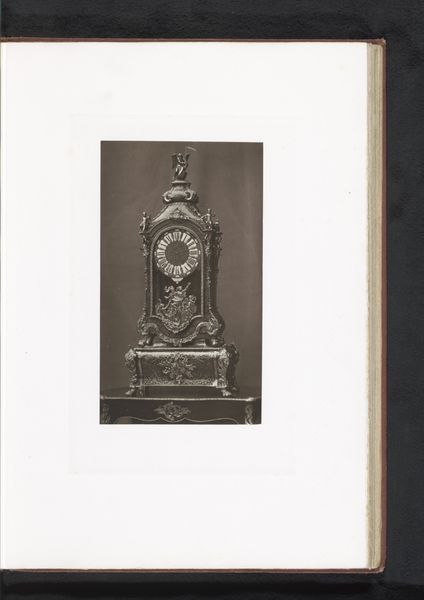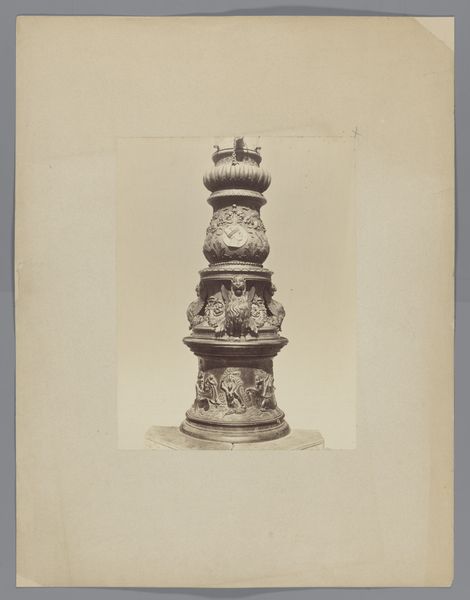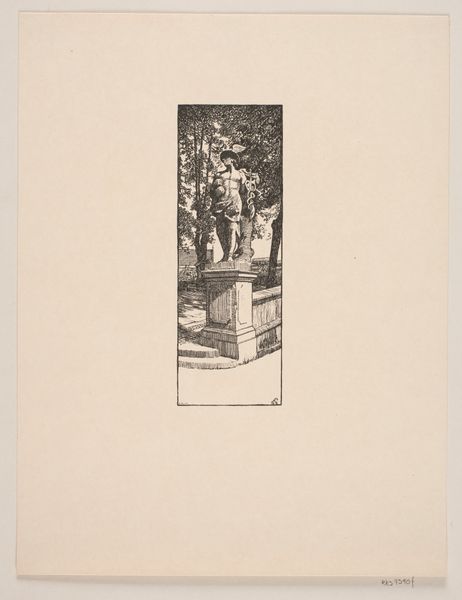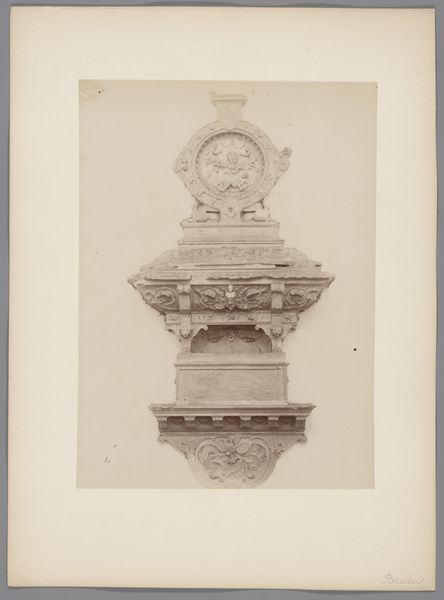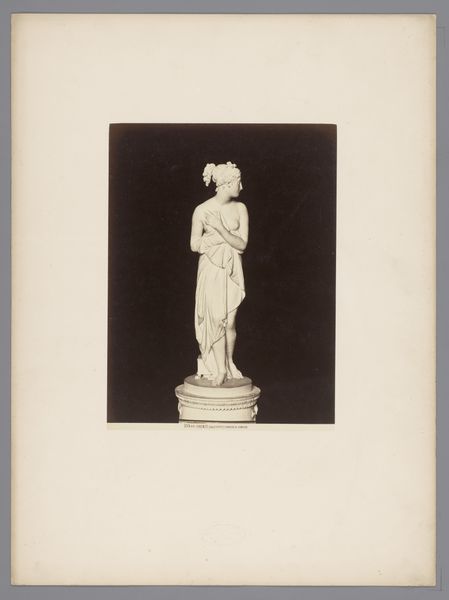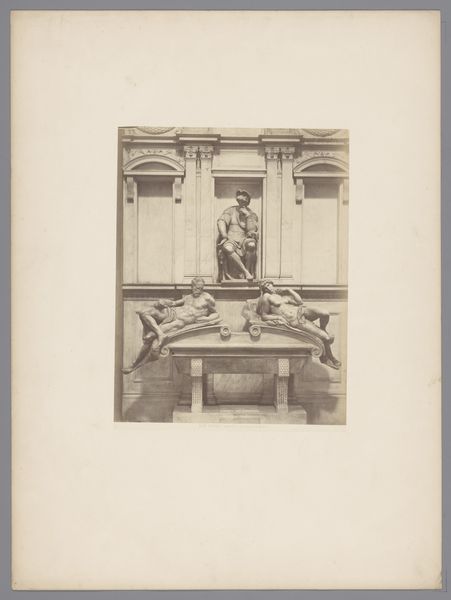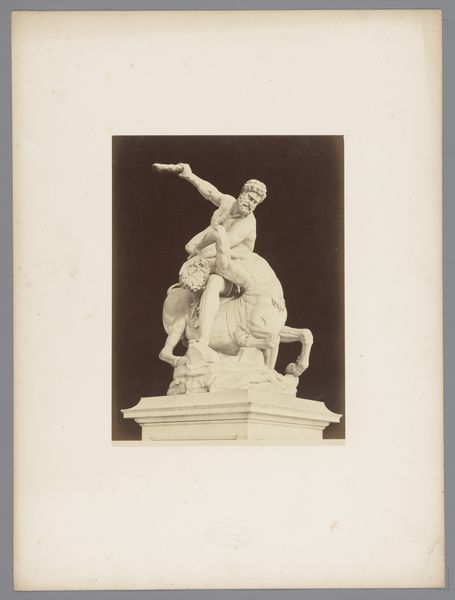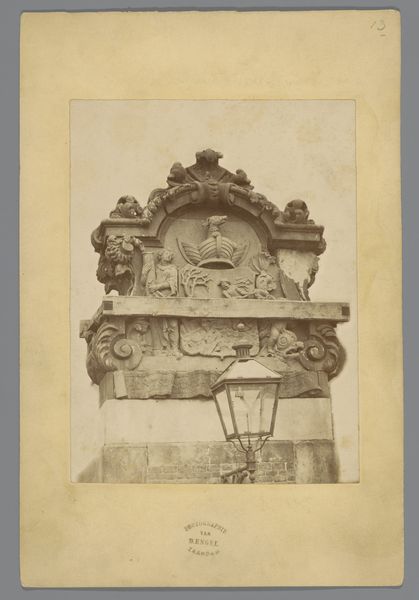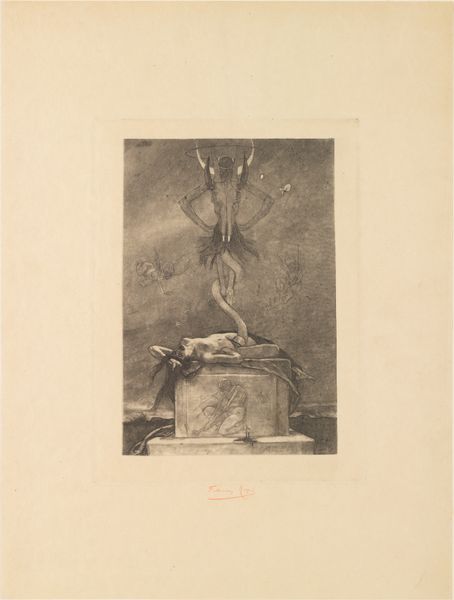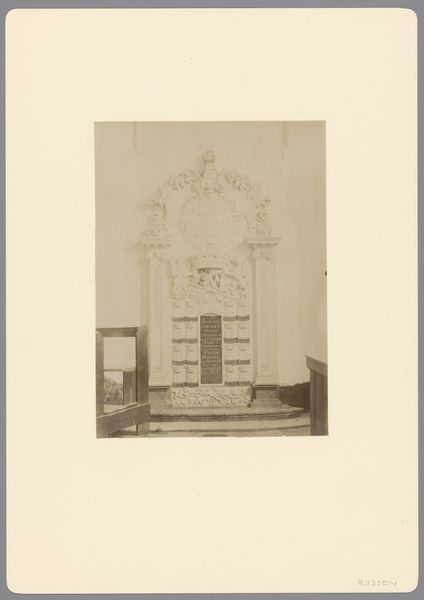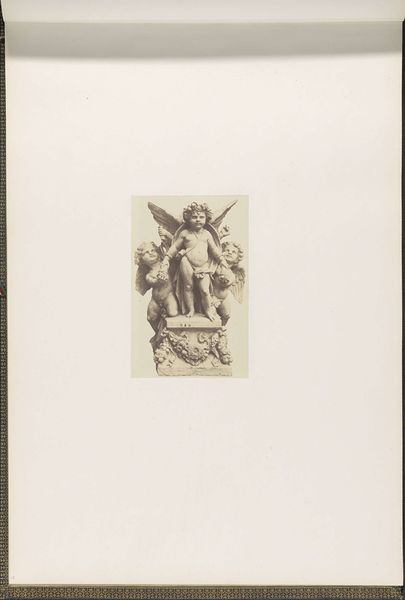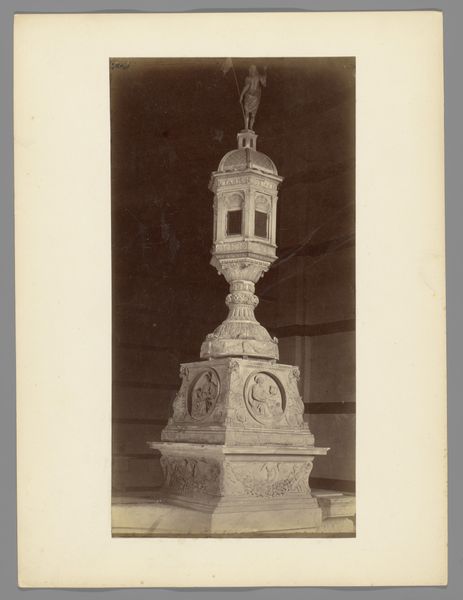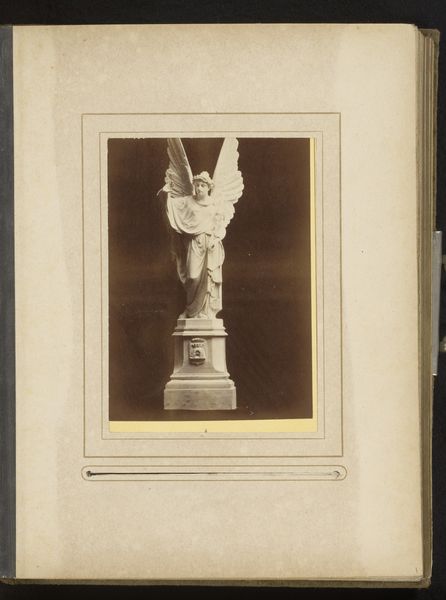
Monument voor Camillo Cavour op het Piazza Carlo Emanuele II te Turijn, Italië 1873 - 1881
0:00
0:00
Dimensions: height 445 mm, width 318 mm
Copyright: Rijks Museum: Open Domain
Editor: This is a photograph of the "Monument to Camillo Cavour" in Turin, taken sometime between 1873 and 1881 by Giacomo Brogi. It depicts a towering white marble sculpture set against a dark backdrop. The whole scene strikes me as rather solemn and formal. What do you see in this piece, considering the weight it seems to carry? Curator: Indeed, solemnity permeates this image. Think about Cavour himself – a key figure in Italian unification. Monuments like these weren’t just about honoring an individual, but also solidifying a new national identity. This photograph isn't just capturing stone; it's capturing the weight of political aspiration made manifest. Do you notice the allegorical figures at the base and their positioning around Cavour? Editor: Now that you mention it, yes, there are figures kneeling, leaning… Is that Italia herself offering tribute? And the way they all gaze upwards creates such a directed feeling, almost a... consecrated one. Curator: Precisely. Consider the very *idea* of Italy, new at that moment. These figures symbolize fidelity to Cavour and his political enterprise, gesturing through symbolic composition to national memory being created in real-time. In that period of Neoclassicism, it meant visually constructing values like unity, liberty and progress through very controlled forms. Editor: So, the photograph freezes not just a monument, but the conscious building of cultural significance through marble and symbol? Curator: Yes, Brogi’s image highlights the monument’s careful construction of shared cultural understanding. That’s precisely the role monuments served, and photographs like these help to amplify and perpetuate these ideas. The clean photographic image mirrors the aspiration towards national purity in Cavour's time. What is your understanding now, about how a picture like this can move the viewer to contemplate collective values and cultural narratives? Editor: Thinking about it that way… I see now it’s more than just stone; it's a carefully crafted message in a bottle, sent across time through symbols. I’ll certainly consider monuments differently from now on. Curator: Excellent. That’s the ongoing dialogue that images initiate between past, present, and future, across generations.
Comments
No comments
Be the first to comment and join the conversation on the ultimate creative platform.
